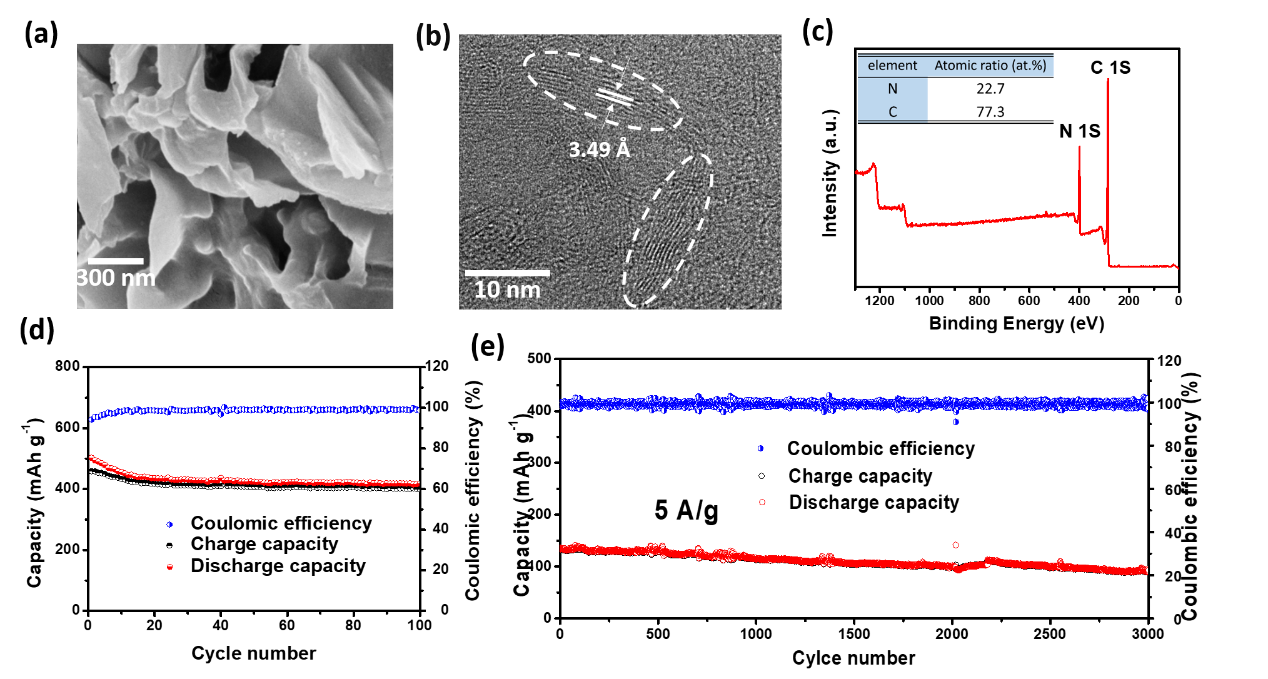[ Instrument Network Instrument Development ] Recently, Tang Yongbing, a researcher at the Functional Thin Film Materials Research Center of the Institute of Advanced Technology, Shenzhen Institute of Advanced Technology, Chinese Academy of Sciences, and his team, together with Professor Li Zhensheng of the City University of Hong Kong, successfully developed high-nitrogen-doped porous microcrystalline carbon nanomaterials. The cathode of the potassium ion battery exhibits high capacity and long cycle characteristics. Related research results "Ultrahigh Nitrogen Doping of Carbon Nanosheets for High Capacity and Long Cycling Potassium Ion Storage" ("High Nitrogen Doped Carbon Nanomaterials with High Capacity and Long Cycle Potassium Storage Performance") published online in the journal Energy Materials Advanced Energy Materials Advanced Energy Materials").

Due to the abundant potassium reserves and the standard hydrogen electrode potential (-2.93 V) close to lithium, potassium-based energy storage devices have good application prospects in the field of large-scale energy storage. However, due to the large ionic radius of the potassium ion (1.38 angstrom), it not only hinders its insertion/extraction in the electrode material, but also has a slow kinetics, which also leads to a large volume change of the electrode material, resulting in a higher cycle stability. difference. Therefore, there is an urgent need to develop an efficient and low-cost electrode active material for potassium ion storage.
Based on the above considerations, Tang Yongbing and his team members Chang Xingqi, Zhou Xiaolong, Ou Xuewu and others successfully developed high-nitrogen-doped porous microcrystalline carbon nanomaterials, whose porous structure is conducive to the rapid diffusion of potassium ions, and contains a large number of micro Crystal carbon nanosheets facilitate the intercalation and adsorption of potassium ions. The results show that the electrochemical reaction of the high-nitrogen-doped microcrystalline carbon nanomaterials is a synergistic mechanism between the diffusion reaction and the tantalum-capacitance reaction. The potassium-electrode negative electrode has a high capacity of ~410 mAh/g and is 5Ag-1. The capacity retention rate after reversible cycle 3000 times at a large current density is about 70%. This work provides a new strategy for designing high performance potassium anode materials.
The research was funded by the National Natural Science Foundation of China, the Guangdong International Cooperation Project, and the Shenzhen Science and Technology Project.
Cement Silo
cement silo applies to engineering construction, concrete mixing stations, roads and bridges, water conservancy, urban construction and other projects. It is also suitable for storing grain, cement, fly ash and other bulk materials.
Waterproof, moistureproof, prevent the loss of cement, reduce urban air pollution, small footprint, long service life and low cost. It is the environmentally friendly construction machinery promoted widely in China.
Insisting personalized design according to customers` actual situation, Xinfeng will provide the most suitable offer.
Pre-sale service: site planning, technical problems solving, auxiliary configuration consultation and benefit analysis.
Sale service: door-to-door installation if necessary, on-site operation technique training.
After-sale service:We will ensure the spare parts` supply , be responsible for the quality of our products strictly , and provide life-long after-sale service.
We will provide you with the first-class technology, first-class products and first-class services to gain your recognition and trust.
Cement Silo,Concrete Plant Silos,Cement Silo Batching Plant,Galvanized Steel Silo
Zhengzhou XinFeng machinery manufacturing Co. Ltd , https://www.xfmachinery.com
